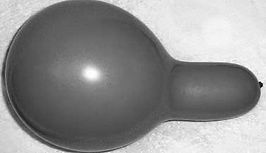Laplace's Law
Marquis Pierre Simon Laplace 1749-1827.
Laplace was a French mathematician and astronomer. He was the son of a peasant farmer. He made revolutionary advances in the area of gravity and astronomy and established the stability of the solar system. This 'was the most important advance in physical astronomy since Newton.'
Probably because he did not hold strong political views and was not a member of the aristocracy, he escaped imprisonment and execution during the French Revolution.
In his spare time the Marquis worked out that the Presure in a vessel X the Radius equaled the tension in the wall of the vessel. The bigger the radius the higher the tension. It is a little more complicated as the thickness and composition of the wall affect the tension.
Encyclopædia Britannica Inc., 2016. Web. 18 Jul. 2016
<https://www.britannica.com/biography/Pierre-Simon-marquis-de-Laplace>.


